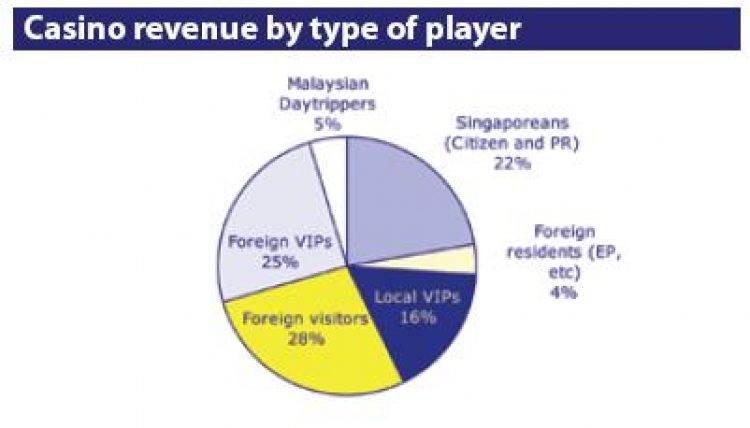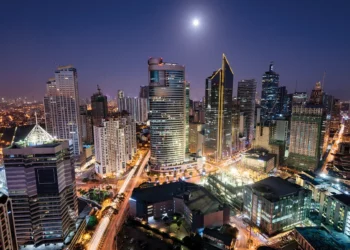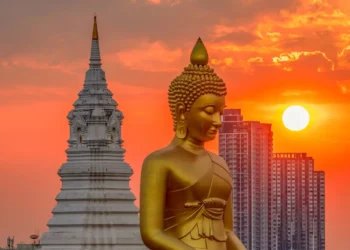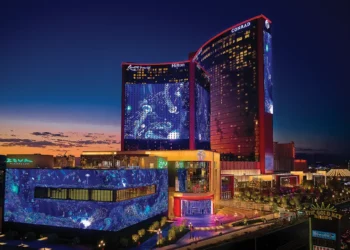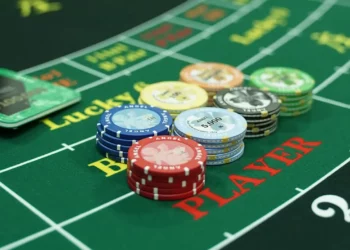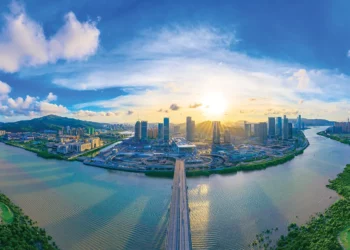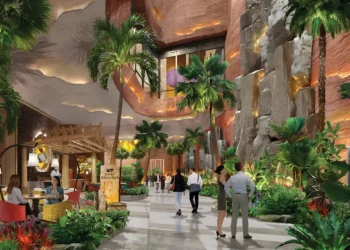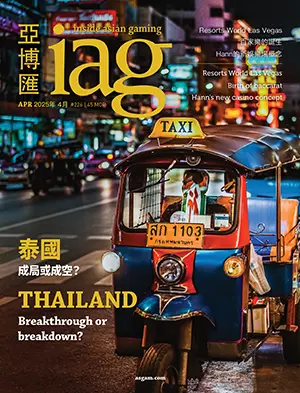In an update to investment bank CLSA’s view on the upcoming Singapore casino gaming market, Aaron Fischer, Jon Oh and Huei Suen Ng stand behind their aggressive forecasts, adding that, if anything, there may be cause for even greater optimism
We spent two weeks speaking to investors about our recent initiation report on Genting Singapore called Handful of Aces [an extract from which was published in the last issue of Inside Asian Gaming]. Our estimates are well above consensus—we are forecasting gaming revenues of US$3.2 billion in 2010 (assuming a full year basis). We understand this is 30-50% above other brokers’ estimates. Also, our Genting Singapore earnings assumptions are 75-165% above consensus.
This, therefore, led to a healthy debate with investors about our detailed assumptions. At the end of the marketing, we came away feeling that not only were our estimates very robust, but there is potentially quite significant upside to our already bullish forecasts.
Singapore and Macau
Starting with the top down estimates—our gaming revenues numbers of $3.2 billion are only 23% of the Macau gaming revenues. Or in other words, Macau is expected to be four times greater than Singapore. Does this make sense? We think it is conservative.
Macau has a major advantage over Singapore because of the proximity to China and Hong Kong—this is a huge potential market; which in fact, is not fully tapped. There are still quite strict visa restrictions for mainlanders. In addition, we understand that close to 75% of the Chinese entering Macau are actually from the Guangdong/South China region. People from Hong Kong still need to travel one hour to Macau and door to door (home/work to casino) is probably closer to 90-120 minutes. If all Chinese were free to travel into Macau on an unlimited basis and the currency was freely convertible, Macau gaming revenues could be a high multiple of where they are today.
Singapore doesn’t have China, but it does have another huge “nearby” market, comprising of Indonesia, Thailand and Malaysia.
Gaming spend by Macanese is estimated to be quite low, at less than 5% of total gaming revenues. Whereas we believe the locals market in Singapore can be quite material at around 40% of total (22% mass, 18% VIP).
We understand that the gaming mix will be different in
Singapore vs. Macau, with a higher weighting to the higher win rate non-Baccarat games such as roulette, black jack etc.
Lastly, Singapore will attract a huge number of longer haul visitors from places like India, Europe, North America and Australia/NZ that would not consider Macau as a holiday or gaming destination.
As a reminder, we have previously highlighted our view that we do not believe Singapore will take significant market share from Macau—given that most visitors to Macau are from Hong Kong or just over the border in China, so for convenience and cultural reasons, these players will keep Macau as their primary gaming destination. Of course, there is scope to tap into the mainland market via offering higher junket commissions, but this does not form a material part of our overall gaming revenue estimates.
Blue sky assumption # 1: Singapore to be one third of Macau at US$4.7 billion vs. currently at US$3.2 billion. This would boost our Genting Singapore revenue and earnings assumptions by 36-39%, and our price target by 47%.
Blue sky assumption # 2: Singapore to be half of Macau at US$7.1 billion vs. currently at US$3.2 billion. This would boost our Genting Singapore revenue and earnings assumptions by 95-115% and our price target by 124%.
Singapore and Australia
Australia has a population of 20 million vs. Singapore at 4 million. But Singapore receives 10 million visitors per year vs. Australia at 5.5 million. The GDP per capita is higher in Australia at US$47,500 vs. US$38,000. The propensity to gamble is high in both countries, but we believe it is potentially higher in Singapore for cultural reasons.
Let’s determine whether our casino gaming revenue forecast is reasonable for Singapore vs. Australia. We have excluded VIP from our calculations.
Firstly, we expect US$1.92 billion in mass market gaming revenues for Singapore vs. US$2.1b in Australia. However, we also need to consider the huge pokie market in Australia (slot machines located in pubs and clubs), which would add an additional US$9 billion in revenues resulting in a mass market gaming market of nearly US$12 billion in Australia. We have excluded lottery and sports betting for both countries.
Blue sky assumption: Singapore mass market to be 50% of the Australian casino/pokie market, i.e. US$5.8 billion. This would boost our Genting Singapore revenue and earnings assumptions by 106-158% and our price target by 177%.
Market divide
We arrive at our US$3.2 billion forecast using a bottom up approach. See the table below for a breakdown by segment. We now want to test whether there is upside or downside risk to our assumptions. In nearly all cases, we see upside risk.
A part of this process is that we estimate the number of annual and daily visitors to the casino. As highlighted in the below table, we expect 13 million visitors per year, or 35,000 on a daily basis for both Singapore casinos.
This compares to 33,000 for Genting Highlands and 35,000 for Venetian Macau—for Venetian Macau, we have assumed that only half of the 70,000 visitors will play at the tables, which according to more recent discussions with other gaming industry personnel could be a gross under-estimation, with some saying that between 85-90% of people through the door actually gamble.
To expect that both casinos in Singapore will see the same as one in Macau or one in Malaysia is conservative, in our view. If Genting Highlands sees 33,000, then 60,000 for Singapore would not appear unreasonable, in our view.
Singaporean local market (26% of total)
Let us now turn to the individual segments starting with the local Singaporean market, which we forecast to be US$845 million (Singaporeans and foreign residents). Is this a big number? Not really, as we estimate the current net win for the Singapore gaming market including lottery and sports betting is in the region of S$3.5 billion. This highlights how large the gaming market already is in Singapore.
We can also look to other markets—we believe the best comparable would be Melbourne (which coincidentally is also my home town) because both cities have a population of 4 million and they are two rare examples where there is a “significant” casino in the middle of the town centre. By “significant”, we mean number of tables and major non-gaming elements such as hotel, restaurants and retail to draw in a high number of visitors.
The one casino, Crown, generates gaming revenues of US$1.3 billion per year.
Around 30% is VIP, which we will assume is all overseas visitors; but assume the 70% mass market is all local play, at US$900 million. This implies that the local gaming revenues in Singapore are 11% below Melbourne—when most people would agree that the appetite to gamble in most Asian countries will be higher than western cities.
Also, Melbourne has a huge gaming market outside the casino—in the form of suburban 24-hour slot machine clubs (known as pokie clubs). These clubs generate an additional US$2 billion in gaming revenues per year. Therefore, the Singapore gaming market would be 72% less than Melbourne.
Blue sky assumption: Assume Singapore casinos generate 50% of Melbourne gaming revenues at US$1.5 billion vs. US$715 million. This would boost our Genting Singapore revenue and earnings assumptions by 16-21% and our price target by 26%.
Malaysian day trip market (5% of total)
We only expect the Malaysian day-trip market to contribute US$148 million, or around 5% of total gaming revenues for Singapore. (Note that this excludes our estimates for Malaysians that arrive by air, who would add a further US$100 million or 3% to our forecasts). We have calculated this on the basis of 3 million visitors multiplied by an average spend of US$50 per visit = US$148 million.
Firstly, we believe our visitor arrivals assumptions are low if we consider that there are 16 million Malaysian trips to Genting Highlands each year. We already know that there are around 9 million visits from Malaysians across the border each year—while a large chunk will be workers, there will also be a substantial increase once the integrated resorts open. We understand that the maximum capacity of the two bridges is 36 million per year, or 100,000 per day, so the infrastructure can support a huge increase in day-trippers.
We believe that the majority of these visits will be day-trip, as the majority will not be keen to book a room at these resorts, which will cost around S$260 (US$185) per night (vs. only US$20 at Genting). However, we believe Genting will leverage their bussing expertise from the Genting Highlands.
Secondly, we very conservatively forecast that the average spend per visit will be US$50, which compares to US$62 at Genting Highlands. Logic would suggest that the average spend in Singapore would be higher as the average wealth of visitors to Singapore would also be higher.
Blue sky assumptions: Assume Malaysian day-trippers are 40% of those visitors to Genting Highlands, i.e. 6.4 million; and average spend is US$80, i.e. a 30% premium to the average spend in Genting Highlands. This would boost our Genting Singapore revenue and earnings assumptions by 6-12% and our price target by 20%.
Foreign mass market (28% of total revenues)
A few broad assumptions were made in this category, which boils down to 4 million visits with an average spend of US$200. Because of the unique Singapore market in this sense, it is hard to find an anchor for this forecast.
We could look at Macau and say that there were 22 million visitors in 2008 and assume that 50% play at the casino, which results in 11 million foreign players per year. This compares to Las Vegas—where they were 37.5 million visitors last year, with 85% of respondents to a survey mentioning they will gamble while visiting Vegas.
We didn’t receive much pushback from investors on our estimates, with many agreeing that the Indonesia market promises to be fairly large. Also, many Indian clients we met in Singapore argued that the Indian market will be huge—given the proximity of Singapore; the number of flights per day; the rising affluence; the appetite for gaming (although many argued that the average spend would be low vs. Chinese); and the lure of Universal Studios.
Local and foreign VIP market (40% of total)
We reckon this category is a tough one to forecast, which is why we believe we are extra conservative. The big unknown will be how the junket operators will be regulated in Singapore. We understand that even the companies are still discussing the framework with regulators. On one hand, we could assume that the Singapore government will be extra cautious to ensure that any companies without the best corporate governance track record will not be allowed to operate in Singapore. However, we take the view that the Singapore government is fully invested in the success of the integrated resorts; and they would prefer the success to come at the expense of “unlucky” foreign VIP tourists vs. low income Singaporeans—the latter would create worse press.
We do not think Singapore will take huge market share from Macau. It has to be “some” because around 6% of tourist arrivals into Macau now are from Southeast Asia. It would be reasonable to assume that maybe 25% of these visitors will divert to Singapore—just like some SE Asians will stop flying down to Australia.
We do not see a huge number of Guangdong day-visitors to Macau getting on a plane to Singapore. However, we believe that some Chinese will be lured down to Singapore for gaming—for a number of reasons:
- • a new alternative to Macau. Potentially that player from Beijing or Shanghai that was visiting Macau four times a year will divert one of those trips to Singapore;
- • 11% of all tourist arrivals into Singapore are from China (second after Indonesia at 18%). Therefore some of the tourists will find their way to the casinos; and
- • we believe Singapore will become a more exciting destination with both the casino and other activities such as Universal Studios and, of course, the world famous Night Safari. Maybe some Chinese tourists divert their holidays from Bali or Thailand or Hong Kong or Europe to Singapore.
We estimate the foreign and local VIP market to be US$1.3 billion. This compares to the VIP market in Macau of US$9.5 billion. We still believe that there will be new pent-up demand, which accounts for a large share of the US$1.3 billion—but assuming there is no new demand, then Singapore is potentially taking just 14% market share from Macau.
We have received some pushback from clients saying that all of Macau’s VIP market is money laundering and this will not make it down to Singapore due to potentially tougher disclosure procedures. Since we have been following Macau, we have not come across any evidence of money-laundering. But we do not want to be naive and pretend nothing illegal was ever to happen in Macau. We do maintain the view that money laundering would be quite expensive in Macau given the gaming tax of 39%.
On the other hand, there is also another school of thought which suggests that the side betting market in Macau is huge (this is when the players and junket operators agree unofficially that the real bet is a significant multiple of the bet on the table, e.g. if the bet on the table is HK$100,000 it is really HK$1 million or say US$100,000). Some argue that if side-betting is included, then the real size of the Macau gaming market would be double what is currently reported, which would imply our forecasts for Singapore are more reasonable.
Aside from Macau, these VIP players are mobile and are also visiting Las Vegas, Australia, etc. We estimated in our recent report that the Asian VIP market is worth around US$12 billion. Again US$1.3b is only 11% of the total.
We could also compare the VIP market in Singapore to Australia. We believe the Australian Asian VIP market is around US$500 million. Given location and superior resort quality, we expect that Singapore would be comfortably above Australia.
Management have not provided any guidance on the size of the overall gaming market or split of VIP to mass etc. However, Genting guided towards a table split of 250 VIP tables and 500 mass tables, i.e. 33/67% split. This compares to Macau, where the VIP tables are around 20% of total; yet total VIP revenues are 70% of total. This therefore implies our net win per VIP table is super low for Singapore at around US$6,233 per table per day vs. around US$20,000 in Macau.
Blue sky assumptions: Assume that the Singapore net VIP per table is $13,000 per day (70% of Macau), or that the overall size of the market is US$2.5 billion (20% of the total Asian VIP market). This would boost our Genting Singapore revenue and earnings assumptions by 15-30% and our price target by 18%. The lower boost to the price target is due to the lower-margin nature of the VIP business.






